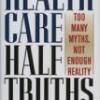Let's start with the quality question. Can you define high-quality care? Experts assembled by the Institute of Medicine have identified six dimensions:
promoting safe care that avoids injuring patients during a medical treatment
delivering effective care that is both beneficial and based on scientific knowledge
supporting patient-centered care that is respectful of patient preferences and values
providing timely care that reduces waits and harmful delays
ensuring efficient care that is appropriate but not wasteful
guaranteeing equitable care that does not vary regardless of gender, ethnicity, geographic location, or socioeconomic and insurance status
According to the IOM, a health care system that incorporated these six improvements would be safer, more reliable, more responsive to patients and more technologically sophisticated to deliver preventive-, acute-, and chronic-care services. Within such a system, health care practitioners would work together better, fewer resources would be wasted, and patients would experience improved health with less pain and suffering. Now, that would be high-quality care.
High-quality care then, ultimately, is defined as care that promotes health for those who are currently well and improves health for those who are not. Delivery of high-quality care is absolutely the right thing to do, and sometimes delivering high-quality care also saves money - for example, when we can eliminate too many tests and procedures.
But delivering high-quality care does not always save money. Think about one obvious case: less than half of older patients who are taking cholesterol-lowering "statin" drugs are still taking them as prescribed six months later. This country currently spends $10 billion per year on statins. If we could increase the percentage of patients who should be taking statins from half to three-quarters, we would spend an additional $5 billion. Although the cost savings from fewer people having heart attacks would balance some of these additional costs, the savings would not be $5 billion. Therefore, taking a statin as prescribed is better quality care, but it is also more expensive.
How often do we do the "right" thing? A recent study of a large number of patients reviewed the use of 30 specific medical services that either prevent or treat some of the leading causes of illness and death. The indicators of quality care were based on established national guidelines for screening, diagnosis, treatment and follow-up care for both acute and chronic conditions. The percentage of patients with each condition who received "quality care" was then measured. Included in the 30 conditions was treatment for alcohol dependence, follow-up after suspected breast cancer, colorectal cancer screening, heart failure treatment and counseling about behavioral changes that might delay or prevent coronary artery disease and diabetes.
The study found that, overall, slightly more than half of the patients - just 55 percent - received the recommended quality medical care. Think back to your school days: In any course we took, 55 percent is an F.
Why did so few patients receive the appropriate care? Part of the reason is that there is a long and, unfortunately, complex chain of events that must occur when doing the right thing for the patient. This chain begins with a group of practitioners, usually physicians, writing recommendations, or guidelines, as to the best current medical care. Next, the physician taking care of the patient has to actually read the guidelines and remember them, and then order the appropriate test or prescription. Finally, and perhaps most important, the patient has to follow instructions to get the lab test or to get the prescription filled and then take the medication for as long as recommended. Given this chain of events, it is no wonder that only 55 percent of care received by patients is considered "high-quality." The physician, patient, family and society need to work on producing high-quality care together.
The most important quality advance - which will also eventually save money - is likely to be the electronic medical record, where a patient's history is displayed and guidelines appropriate to each patient's care "pop up" as a reminder at the time of the patient's visit. The EMR also will allow important inclusion of patient preferences, as well as reminders to encourage patients to take personal responsibility in the management of their care. The federal stimulus package enacted in February took a leap forward to help physicians and hospitals achieve the goal of providing everyone with an EMR within the next five years.
So back to the original question: Does high-quality care save money? In the study looking at the care received for 30 common health conditions, 46 percent of participants received less than the appropriate level of "needed" care and 11 percent received more than what was recommended or appropriate. If we do the math, almost four times as many people received less care than too much care. Therefore, it would follow, at least from this study, that delivering high-quality care might actually require spending considerably more at every level of medical care - preventive, chronic, and acute - in order to do the right thing most of the time.
It may not be cheaper to deliver high-quality medical care, but delivering high-quality care is what we should do because it will improve patients' health and quality of life. Many people think that providing high-quality health care requires just eliminating inefficiencies and waste in our health care system, but that is just part of the story. In addition to streamlining what we already do, delivering high-quality patient-centered care may actually require doing more of what is needed in some cases. Until some of the improvements in quality are implemented, it will be difficult to come up with a price tag for high-quality care. However, beginning now, an investment in quality improvement may actually save enough to pay for a portion of the uninsured. Not this week - but in a five- to 10-year timeframe. It is time to get started.










